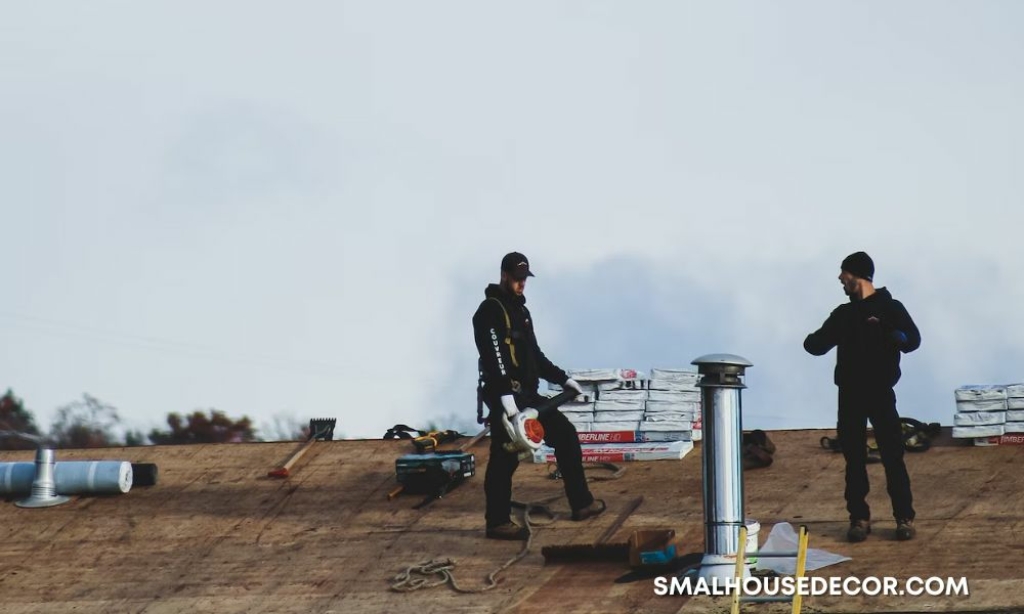Having a good roof over your head is essential for keeping your home safe and secure. But with so many different types of roofing materials available, it can be difficult to decide which one is right for you. To help make the decision easier, here are some basics about roof construction and materials that you should know before making a purchase.
From understanding the different types of shingles to learning about the benefits of metal roofs, this guide will provide an in-depth look at all aspects of roof construction and materials. With this information in hand, you’ll be able to make an informed decision on what type of material is best suited for your home or business building.

Types of Roofing Materials
When it comes to roofing materials, there are several options available. Asphalt shingles are the most common type of roofing material in the United States and are known for their durability and affordability. Metal roofs offer superior protection from elements such as wind, rain, and fire.
Clay tile roofs are heavier and have a distinctive look, they also require more maintenance than other types of roofs. Shingles made from slate or wood can add character to any home, but they come with a higher price tag. Thinking of going green? Consider solar roofing, which utilizes photovoltaic cells to convert sunlight into electricity.
Roof Construction Basics
Before installing any type of roofing material, it’s important to understand the basics of roof construction. Roofs are made up of several components, including the roof deck, which is what provides support for the roofing materials. The rafters and trusses provide additional strength to hold up the weight of the roof.
Properly sealed flashing prevents water from seeping through any gaps in the roof structure. And finally, gutters and downspouts help funnel water off your roof and away from the foundation. Having a good understanding of all these components will help ensure your roof is built to last.
Different Types of Roofing Systems
In addition to understanding the components of roof construction, it’s also important to understand the different types of roofing systems that exist. Most roofs are either built with sloping planes or flat planes. Sloped roofs have steeper angles and can be made from shingles, metal sheets, slate tiles, and other materials.
Flat roofs, on the other hand, typically have a low-slope profile and are made from flat materials such as rubber or membrane sheets. The type of roof you choose will depend on the look and feel you’re going for as well as your budget. Also, if your home or structure is in an area with extreme weather, you may need to consider a more specialized roofing system.
Roofing Maintenance
Roofs need to be properly maintained to ensure they last for many years. Regular inspections should be done to identify any potential problems, such as cracked or missing shingles or damaged flashing. It’s also important to clean gutters and downspouts on a regular basis to prevent water from pooling on the roof and causing leaks.
Roofers can provide more detailed maintenance instructions for specific types of roofs. Therefore, it’s essential to find reliable roofing maintenance services for regular inspections. Consider asking for references from friends and family who have recently had roof work done.
Roofing Material Choices
When it comes to selecting the right roofing material for your home or structure, there are many things to consider. You need to take into account climate, style preference, maintenance requirements, and budget when making a decision.
Asphalt shingles are a popular choice because they come in a variety of colors and styles and are relatively inexpensive. Clay tiles offer a unique look, but they require more maintenance and are more expensive than asphalt shingles. Metal roofs are a great option if you live in an area prone to extreme weather, as they offer superior protection from wind and fire.
Repairs and Projects
Knowing when to repair or replace your roof is an important decision that should be taken seriously. If you notice any signs of damage such as missing shingles, water spots, or cracked flashing, it’s best to contact a professional right away.
Depending on the extent of damage and type of material used, repairs can cost anywhere from a few hundred dollars to thousands. If the damage is too severe to be repaired, you may need to replace the entire roof. Additionally, if you’re planning any home renovation projects that involve changing the structure of your roof, it’s best to consult with a professional roofer first.
Final Words
In conclusion, roof construction and materials are an essential part of any home or business building. With the right knowledge on hand, you’ll be able to make a well-informed decision when it comes to selecting the best roofing material for your needs.
From understanding different types of shingles and roof systems to learning about maintenance requirements, this guide provides all the basics that you need to know in order to keep your roof safe and secure. If ever in doubt, don’t hesitate to contact a professional who can help ensure that your roof is properly maintained over time and provide advice on repairs or projects if needed. Remember: having a solid roof over your head is one of the most important investments you can make!